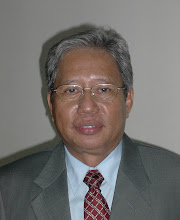River basin planning would include the following topics:
Contextual and environmental issues that should be taken into consideration in the current river basin planning would include:
- Water Resources Assessment
- Water Resources Project Cycles
- Project Formulation
- Logical Framework for Integrated River Basin Development
Water resources development and management involves people, natural resources, and infrastructures. Hence, water resources are integrally link to the land resources and environmental condition in meeting the water-related needs of society. In this case, the responsibility of water resources professionals would include:
- Formulation and implementation of water resource management strategies; and
- Planning, design, construction, and operation and maintenance of water resources/hydraulics infrastructures
- River regulation structures;
- Wells for pumping groundwater;
- Storage (Dam and reservoir) and conveyance facilities;
- Water treatment plants;
- Water distribution networks;
- Wastewater management system;
- Flood damage reduction measures;
- Erosion mitigation practices;
- Storm drainage systems;
- Bridges, culverts;
- Hydroelectric power plants; and
- Various other man made facilities.
Since water related needs and issues are broad, complex, and crucial to economic growth, social development, and environmental protection, naturally water resources development and management are interdisciplinary. Hence, in order to do the work successfully, water resources planners should be able to work with other stakeholders, like politician, economists, lawyers, urban planners, agricultural scientists, chemists, biologists, geologists, meteorologists, system analysts, and professionals from various other scientific and engineering disciplines, as well as water users and the public. On the other hand, the holistic or integrated approach should be implemented for water resources management purposes, within a geographical unit of river basin, through a river basin planning.
Contextual and environmental issues that should be taken into consideration in the current river basin planning would include:
- Sustainable development;
- Climate Change adaptation;
- Renewal Energy; and
- Green Technology.

Comments